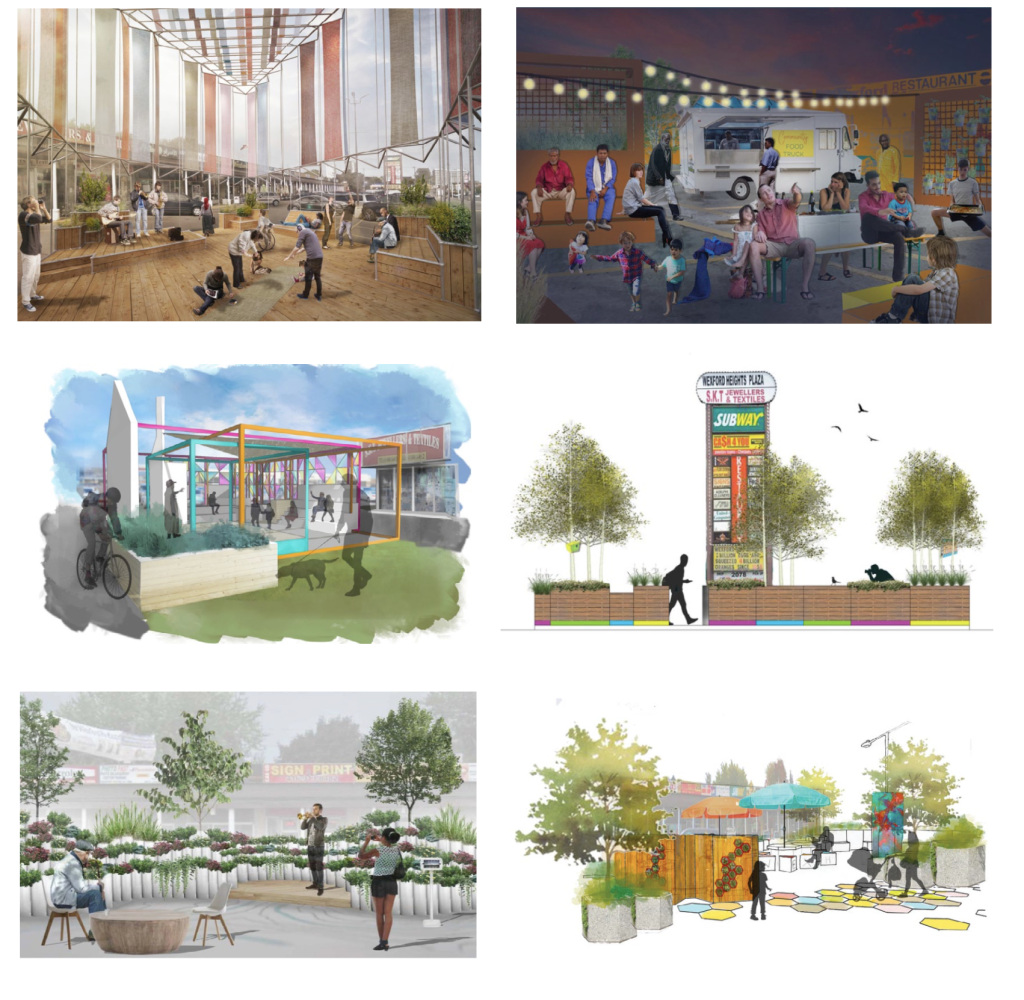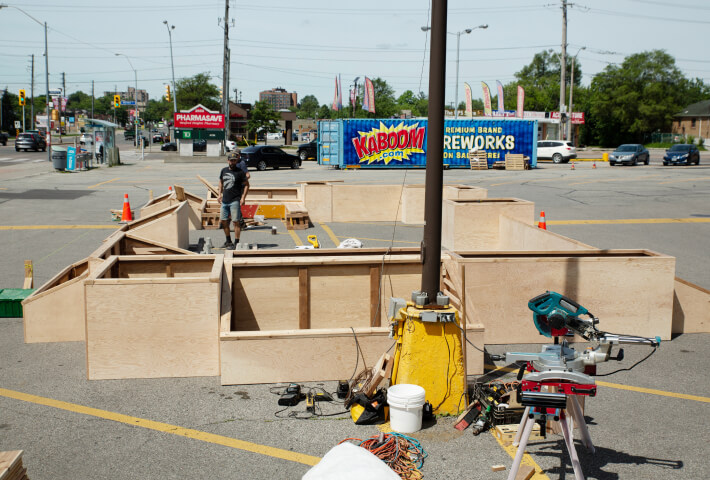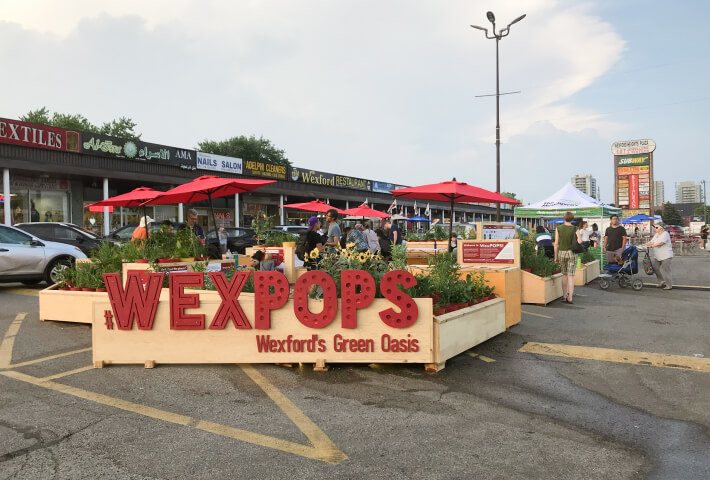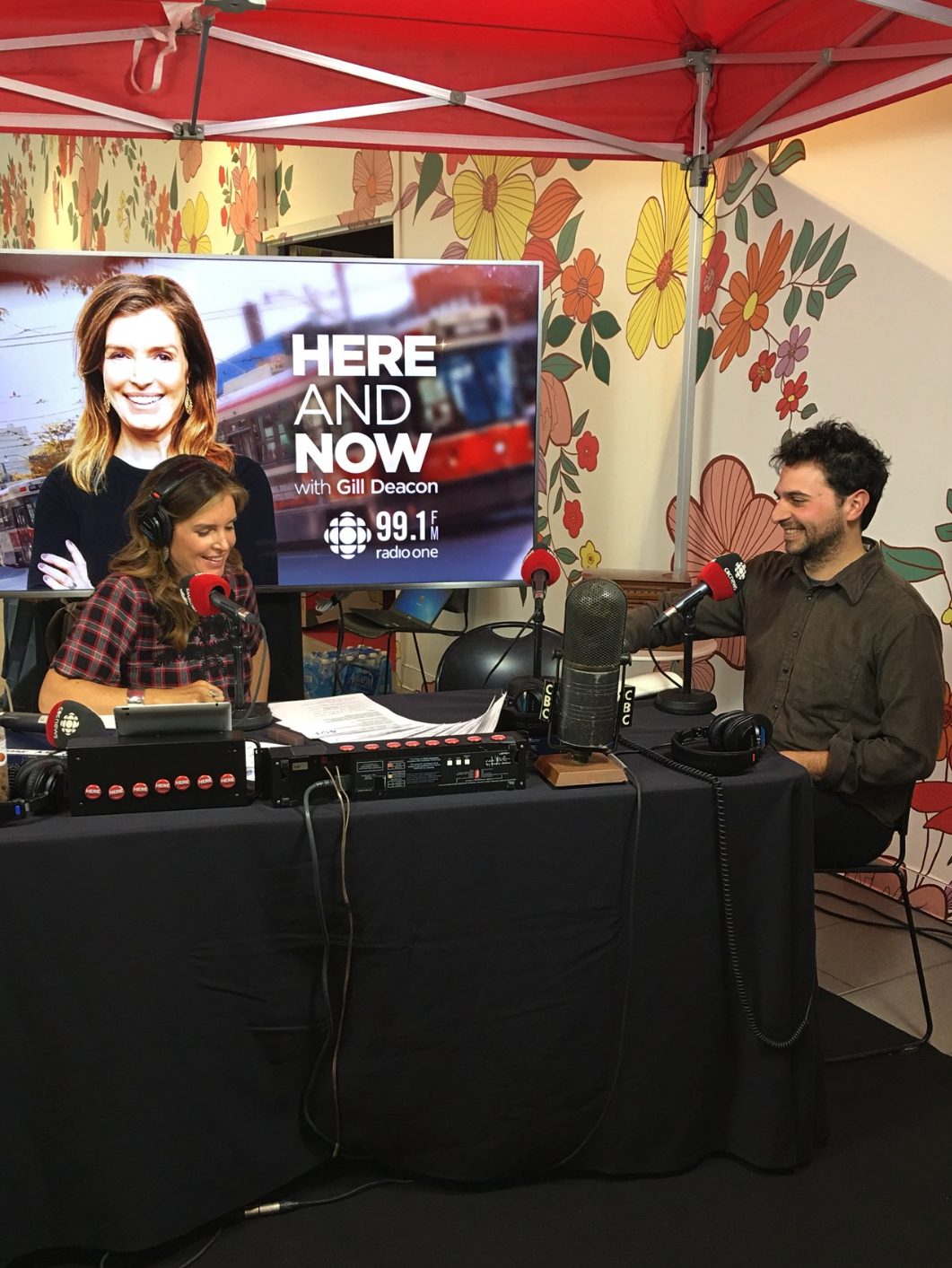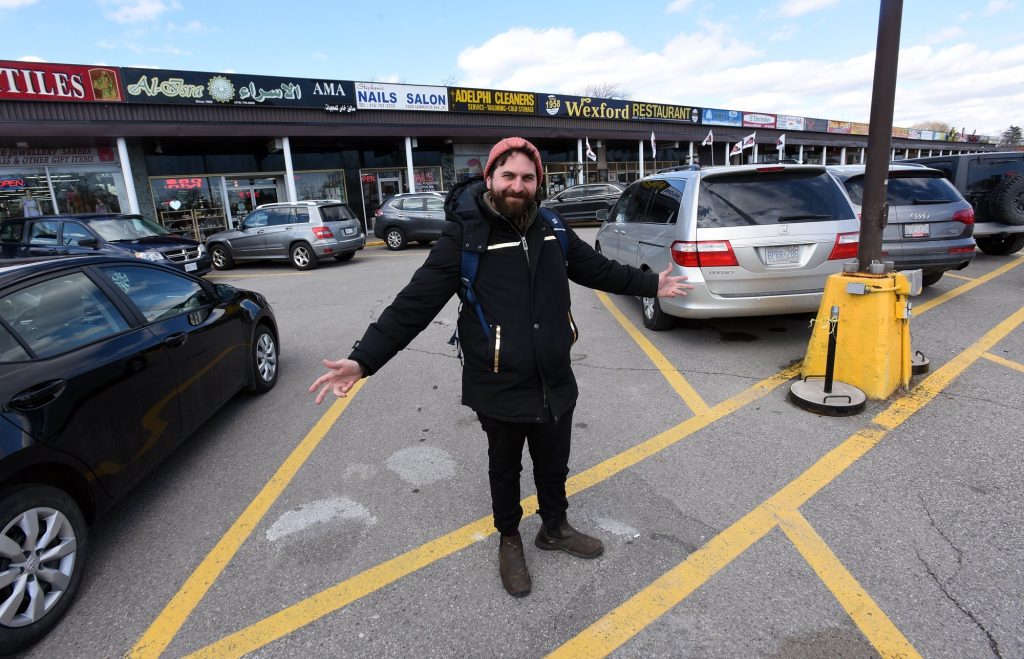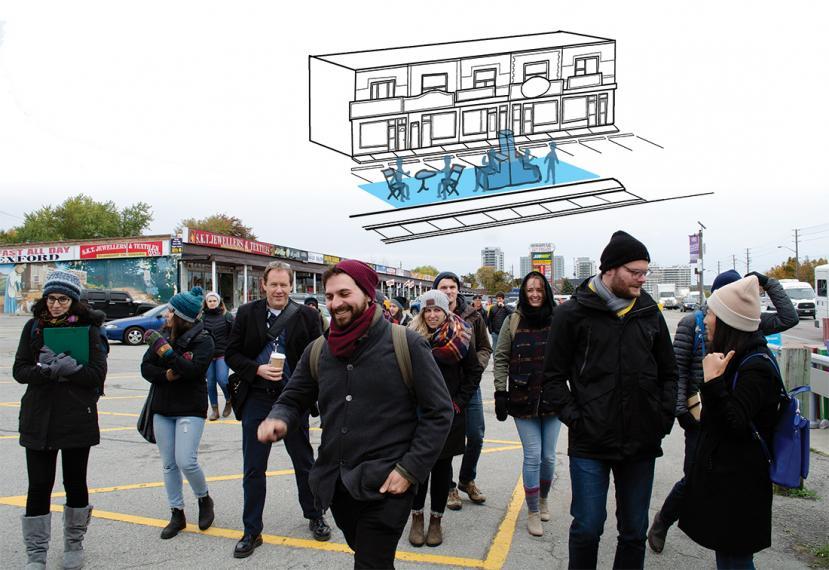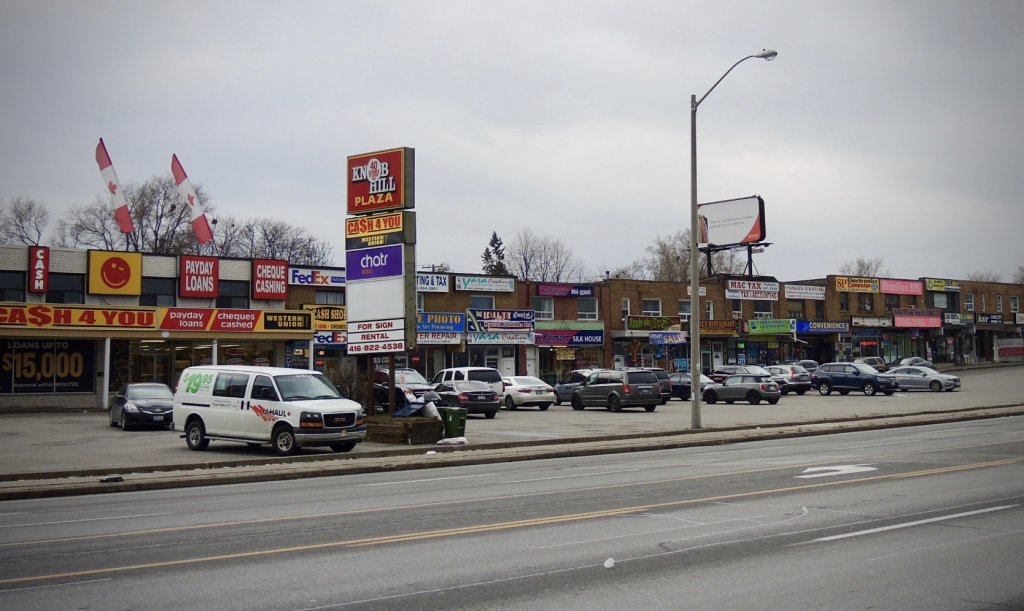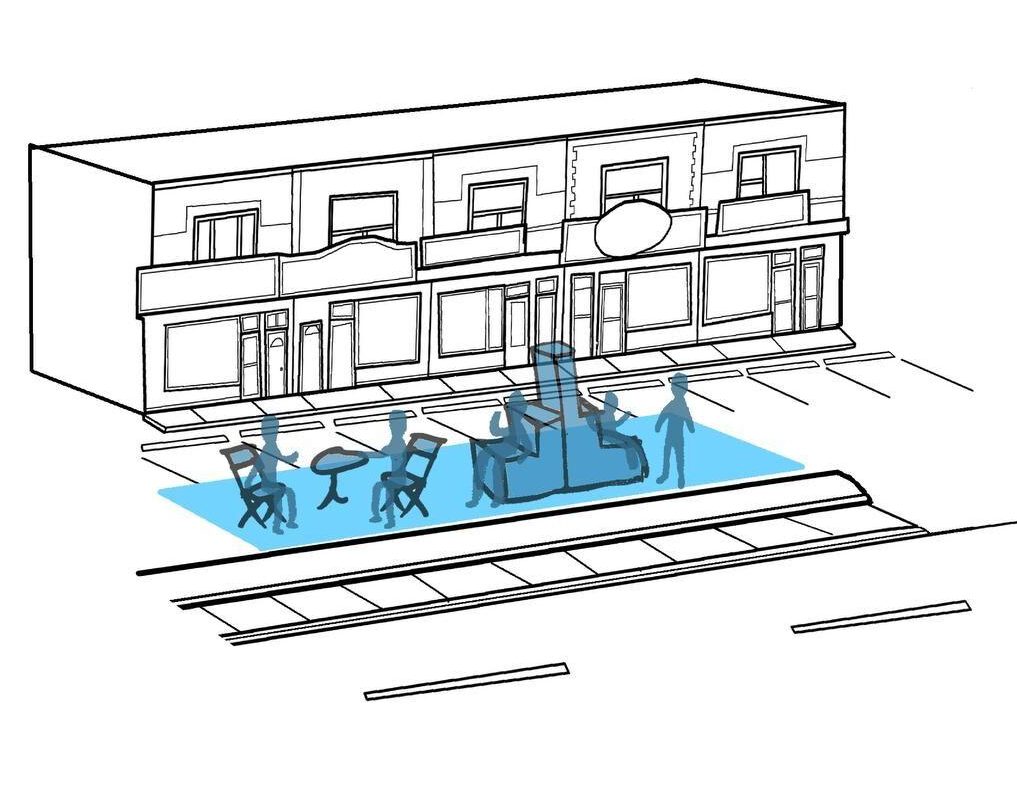2019: WexPOPS
Reinventing Strip Malls – plazaPOPS
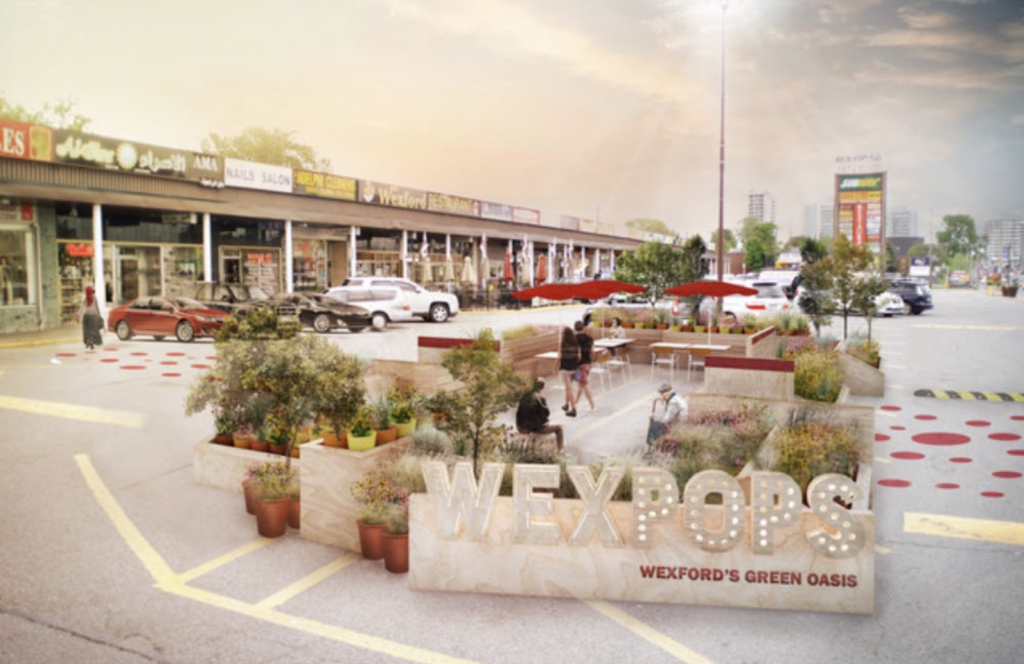
By Sharon Costello
Link to article
A graduate from the University of Guelph’s landscape architecture program will soon be bringing his master’s thesis to life
in the form of a pop-up community gathering space in Scarborough’s Wexford Heights plaza.
PlazaPOPS are low-cost high impact pop-up community spaces within the privately- owned public spaces (POPS) of Toronto’s strip mall plazas. They are intended to address the lack of amenities for pedestrians and transit users, while improving aesthetics, facilitating community gathering, and attracting pedestrians to local businesses in Toronto’s strip malls. PlazaPOPS are created using modular, context-sensitive approaches that encourage pedestrian participation. The first ever plazaPOPS will be installed in the Wexford Heights plaza parking lot this summer.
The project was initiated in the spring of 2018 by using a Public Space Incubator Grant through Park People, funded by Ken and Eti Greenberg and the Balsam Foundation. The proposal was prepared by Daniel Rotsztain (the Urban
Geographer), and University of Guelph Landscape Architecture professors Brendan Stewart and Karen Landman based
on concepts from Rotsztain’s University of Guelph Masters of Landscape Architecture thesis.
“[Daniel’s thesis] took on this broad topic of thinking of opportunities for enhancing the public realm in commercial strip malls, particularly in the inner suburbs … So, once we started thinking about putting a grant proposal together, we had to quickly find a business improvement area to partner with and to start honing in on a specific community and landowner, and we wound up in Wexford Heights,” Stewart told NRU.
The proposal, which was integrated into a community design studio class for the school of environmental design and rural development at the University of Guelph, resulted in six discrete designs.
“[The designs] were all intended to respond to the same kind of goals and principles,
so they were all about creating community gathering space and enhancing local business activity… but they were each distinct, highlighting a different theme,” said Stewart.
All six designs focused on creating a pop-up pedestrian experience in a unique way. They included a stopover for birds, a community food truck, a colossal loom on which participants could weave, community gardening, the replication of a cozy apartment living room, and venues for hosting cultural markets and musical performances. The team has selected a final design which incorporated elements from the previous designs, based on the feedback received from the community working group and the public. The final design was revealed on June 13.
The plazaPOPS team’s partnership with the Wexford Heights BIA led to additional funding through the city’s Kickstart BIA innovation fund. It also connected the team with Wexford Restaurant owner Tony Kiriakou, who offered 10 parking spaces as the location for the pop-up.
Since POPS are often a result of development application negotiations between the city and developers, the plazaPOPS team had difficulty finding a property-owner willing to give up parking spaces. According to Wexford Heights BIA coordinator Linda Raeside, there’s always parking available in the area because of its size and location, and the Kiriakou saw it as an opportunity to draw attention to businesses in the area.
“[Kiriakou] thought it was a fantastic idea. He likes to becreative and have innovative things happening, and he’s very supportive of the community because he’s been in the community for many, many years.”
All of the designs for the pilot plazaPOPS are modular so they can be stored and redeployed or reconfigured in the future.
“It is intended to be temporary but the idea is that this is a demonstration. We’re trying to test this idea out and were hoping that if it’s successful and people like it, including the local community, but also importantly the local business community… we can continue to work on the program with other BIAs.” said Stewart.
The pilot is also doubling as an active research project being carried out by the university.
“We’re designing a research program for the summer where we’ll be measuring and documenting, and later analyzing and reporting on the actual performance of the space from a social and economic impact perspective. Our hope is by actually collecting data— we will be doing interviews and a public life study—we will
be measuring how it is used and trying to understand what works well and what doesn’t so that if this were to be developed into a broader program, we’d have some evidence to base that on and a real sense of how to do it well,” said Stewart.
The team also collaborated with Scarborough Arts to help coordinate arts and cultural programming in the space, and received donations from Maglin Site Furniture to furnish the pop-up.
The plazaPOPS launch is scheduled to coincide with the Taste of Lawrence Street Festival on July 5th, in order to draw the attention of the 150,000-200,000 people that are typically attracted to the area that weekend.
“It would be something for other strip mall plazas or businesses in the area to want to be involved with once they see it, so were looking forward to [the launch] because it’s been a long process from the initial meeting phase to finally coming to fruition… and we’ll have a finished product that everybody can hopefully enjoy,” said Raeside.
Shaylyn Costello is a student planner reporting for NRU.
